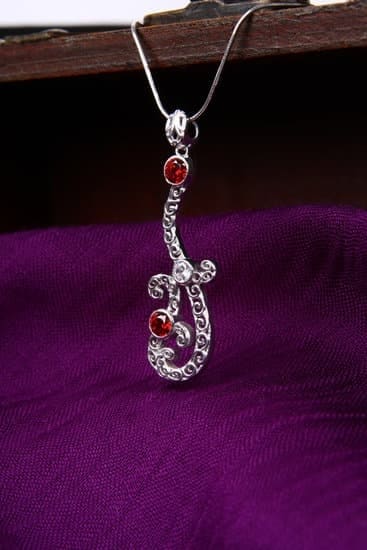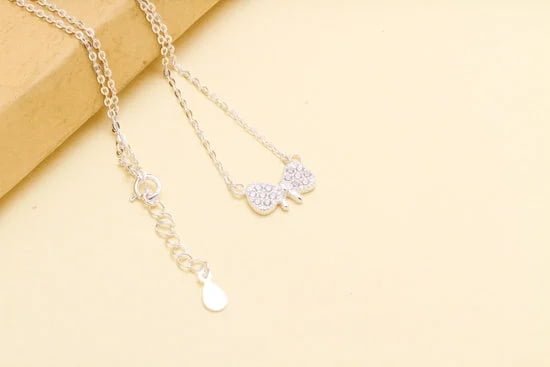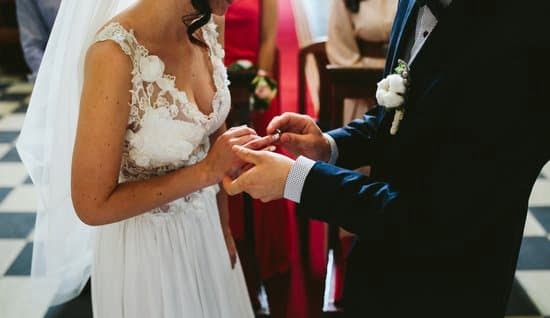Crafts beading jewelry is a fascinating art form that allows individuals to create unique and intricate pieces of handmade jewelry using beads and various materials. From casual bracelets to elegant necklaces, the world of beading offers endless possibilities for creativity and self-expression. In this article, we will delve into the enchanting realm of crafts beading jewelry, exploring its history, techniques, tools, design inspirations, tutorials, tips, and showcasing talented beadwork artists.
The history of beading in jewelry making dates back centuries, with beads being used as adornments in different cultures around the world. We will take a closer look at the origins and evolution of beading in jewelry design, tracing its cultural significance and artistic development over time. Understanding the rich history behind beadwork can deepen our appreciation for this ancient craft and inspire us to create our own contemporary interpretations.
As we venture into the diverse world of crafts beading jewelry, we will discover a wide array of techniques that artisans use to bring their designs to life. From intricate peyote stitch patterns to elegant right-angle weaves, each technique offers a unique way to manipulate beads and create stunning jewelry pieces. Whether you are a beginner or an experienced beadwork artist, mastering these techniques can enhance your craftsmanship and open up new possibilities for your creative endeavors.
History of Beading in Jewelry Making
The history of beading in jewelry making dates back thousands of years and has evolved through various civilizations and cultures. Beads have been used for adornment, currency, and religious purposes, showcasing the significance of this craft form throughout history. Ancient civilizations such as the Egyptians, Greeks, and Native Americans all utilized beads in their jewelry designs, each with their unique styles and techniques.
Some key moments in the evolution of beading in jewelry making include the intricate beadwork found in ancient Egyptian burial sites, the use of trade beads by European explorers to exchange goods with native tribes, and the intricate beadwork traditions passed down through generations by indigenous communities around the world. Beading has always been a way to express cultural identity, status, and artistic creativity.
Today, beading in jewelry making continues to flourish as artisans combine traditional techniques with modern designs to create stunning pieces of wearable art. From intricate seed bead embroidery to contemporary bead weaving patterns, the possibilities are endless.
Whether you’re a beginner looking to learn basic stitches or an experienced beader seeking new challenges, exploring the rich history of beading can provide inspiration for your own unique jewelry creations. Explore ancient beading traditions and techniques passed down through generations; experiment with different materials and styles to create your distinctive pieces that reflect your personal style and creativity.
- Ancient Egyptians utilized beads made from natural materials like stones and shells
- European explorers traded glass beads with Native American tribes for furs and other goods
- Indigenous communities around the world continue to preserve traditional beading methods handed down through generations
Types of Beading Techniques
The art of beading in jewelry making involves a diverse range of techniques that contribute to the beauty and intricacy of handmade pieces. Three popular beading techniques that have stood the test of time are the peyote stitch, brick stitch, and right-angle weave. Each technique offers its own unique characteristics and challenges, allowing crafters to experiment and create stunning jewelry designs.
Starting with the peyote stitch, this technique is known for its versatility and ability to create intricate patterns. Using a needle and thread, beads are woven together in a staggered formation, resulting in a smooth and flexible fabric-like texture. Peyote stitch can be done in both flat and tubular forms, offering endless possibilities for creating bracelets, earrings, or even elaborate statement necklaces.
In contrast, the brick stitch technique involves attaching beads in a stacked pattern resembling bricks laid out in a wall. This technique allows for more defined shapes and designs due to the vertical orientation of the beads. Crafters can use brick stitch to create detailed embellishments or intricate pendants that showcase precise beadwork. With careful attention to spacing and tension, beautiful textures and dimensions can be achieved in brick stitch creations.
Lastly, the right-angle weave is a versatile technique that forms structured connections between beads at right angles. By weaving through multiple beads in different directions, intricate geometric patterns can emerge in jewelry pieces. The right-angle weave is ideal for creating three-dimensional shapes such as cubes or spheres, adding depth and dimension to beadwork designs. This technique requires precision and patience but offers endless opportunities for creative expression in crafting unique jewelry pieces.
| Types of Beading Techniques | Popular Characteristics |
|---|---|
| Peyote Stitch | Versatile, Intricate Patterns |
| Brick Stitch | Defined Shapes, Vertical Orientation |
| Right-Angle Weave | Structured Connections at Right Angles, Geometric Patterns |
Essential Tools and Materials for Beading Jewelry
When it comes to crafting beautiful beaded jewelry, having the right tools and materials is essential to ensure a successful and enjoyable creative process. From basic essentials to more specialized items, having a well-stocked toolkit can make all the difference in bringing your beadwork designs to life. Here is a comprehensive guide to the essential tools and materials you will need to start your journey into the world of beading jewelry.
Tools for Beading Jewelry
One of the fundamental tools for beading jewelry is a good pair of precision scissors. Sharp, fine-tipped scissors are crucial for cutting thread, wire, and cords with accuracy and ease. Another essential tool is a set of pliers, including chain-nose pliers, round-nose pliers, and flat-nose pliers. These tools are used for bending wires, closing jump rings, and holding small components securely while working on your designs.
Materials for Beading Jewelry
In addition to tools, having a variety of beads in different shapes, sizes, colors, and materials is key to creating diverse and visually appealing jewelry pieces. Popular bead choices include seed beads, glass beads, gemstone beads, metal beads, and crystal beads. Along with beads, other essential materials include beading thread or wire for stringing beads together, clasps for securing closures on bracelets and necklaces, as well as findings like jump rings and crimps for finishing off your jewelry pieces neatly.
Storage Solutions for Beading Supplies
As you begin accumulating various beads and supplies for your beading projects, it is important to have an organized storage system in place to keep everything tidy and accessible. Investing in clear plastic containers with compartments or small jars can help you sort and store different types of beads efficiently. Consider labeling each container to easily identify its contents and keep your workspace neat and optimized for creativity.
Design Inspirations for Beading Jewelry
When it comes to creating stunning beaded jewelry pieces, drawing inspiration from various sources can elevate your designs to a whole new level. Nature is a common muse for many jewelry makers, with its abundance of colors, textures, and shapes providing endless possibilities for creative expression. Whether you’re captivated by the vibrant hues of a sunset or the delicate petals of a flower, incorporating elements of nature into your beadwork can result in truly unique and visually striking pieces.
Art has also long been a source of inspiration for beading jewelry designers. From classic paintings to modern sculptures, the world of art offers a wealth of patterns, motifs, and color combinations that can be translated into beautiful beadwork designs. By studying different art movements and styles, you can infuse your creations with artistic flair and sophistication. Experimenting with abstract shapes, geometric patterns, or even famous artworks can add a touch of creativity and individuality to your beaded jewelry.
Moreover, culture plays a significant role in inspiring beading jewelry designs. Drawing from the traditions and symbols of diverse cultures around the world can lend your pieces an air of cultural richness and storytelling. Whether you’re inspired by traditional tribal patterns from Africa, intricate motifs from Asia, or colorful textiles from South America, integrating cultural influences into your beadwork can not only create visually stunning jewelry but also celebrate the beauty and diversity of global craftsmanship.
| Nature | Art | Culture |
|---|---|---|
| Floral patterns in pastel colors | Abstract expressionist paintings | Aztec geometric symbols |
| Ocean-inspired blues and greens | Renaissance-inspired gold tones | African tribal beadwork |
Step-by-Step Beading Tutorials
Creating Beautiful Beaded Earrings
Earrings are a staple in any jewelry collection, and crafting your own beaded earrings can add a personal touch to your accessories. To create a pair of beautiful beaded earrings, you will need to gather some essential materials such as earring hooks, beading thread, beads of your choice, and small pliers. For beginners, starting with simple designs like basic dangle earrings can help in mastering the art of beadwork.
Once you have chosen your beads and tools, follow a basic pattern or design to string the beads onto the earring hook using the beading thread. Experiment with different color combinations and bead sizes to create unique and stunning earrings that showcase your style.
Crafting Stylish Beaded Bracelets
Beaded bracelets are versatile accessories that can be customized to suit any outfit or occasion. To make your own stylish beaded bracelets, you will need materials such as stretch cord, various beads, scissors, and glue (optional). Choose beads in different sizes, shapes, and colors to create an eye-catching bracelet that reflects your personal style.
One popular technique for making beaded bracelets is using elastic cord and stringing the beads onto it in a desired pattern. Knot the ends of the cord securely and add a dab of glue for extra reinforcement. With endless possibilities for bead combinations and patterns, you can craft unique bracelets that make a statement.
Designing Stunning Beaded Necklaces
Beaded necklaces are timeless pieces of jewelry that can elevate any ensemble with their elegance and charm. To design a stunning beaded necklace, gather materials such as beading wire, beads in various sizes and shapes, closure clasps, crimp beads, and jewelry pliers. Decide on a design or pattern for your necklace before stringing the beads onto the wire using crimp beads to secure them in place.
Incorporate focal beads or pendants for added visual interest and personalize the length of the necklace according to your preference. Whether you opt for a simple string of pearls or a bold statement piece with intricate beadwork, creating your own beaded necklaces allows you to express your creativity through handmade jewelry that is truly one-of-a-kind.
Tips and Tricks for Beading Jewelry
Beading jewelry is a popular and rewarding craft that allows creators to design beautiful and unique pieces using beads of various shapes, sizes, and colors. However, like any creative pursuit, beading jewelry comes with its own set of challenges and obstacles. To help you navigate these potential stumbling blocks and improve your beading skills, here are some expert tips and tricks to keep in mind:
- Use the right tools: Having the appropriate tools for beading jewelry can make a world of difference in the quality of your work. Invest in high-quality tools such as needles, pliers, bead mats, and thread snips to ensure smooth and efficient work.
- Take care with tension: Maintaining consistent tension while beading is crucial for achieving professional-looking results. Be mindful of how tightly or loosely you pull your thread through the beads to avoid uneven or crooked stitching.
- Practice patience: Beading jewelry is a meticulous art form that requires precision and attention to detail. Take your time with each stitch and bead placement to ensure a polished final product.
In addition to these general tips, there are specific troubleshooting techniques that can help you address common issues encountered while beading jewelry:
- If your thread keeps tangling or knotting, try using a thread conditioner or wax to help it glide smoothly through the beads.
- To prevent beads from slipping out of place, consider using a dab of clear nail polish on knots or thread ends to secure them in position.
- If you find yourself running out of beads mid-project, make sure to purchase an ample supply beforehand and organize them by color or size to streamline your workflow.
By incorporating these tips and tricks into your beading practice, you can overcome challenges more easily, refine your skills, and create exquisite handmade jewelry pieces that reflect your creativity and passion for beading.
Showcasing Beaded Jewelry Artists
Crafts Beading Jewelry has been a fascinating art form that has captured the hearts of many enthusiasts around the world. Through the use of beads and various materials, talented artists and designers have been able to create unique and stunning jewelry pieces that showcase their creativity and skill. The world of beaded jewelry is vast and diverse, with different techniques and styles to explore, making it an exciting hobby for those who are passionate about crafting.
One of the most inspiring aspects of Crafts Beading Jewelry is the opportunity to showcase the work of talented beadwork artists and designers who are pushing boundaries and creating innovative designs. These artists draw inspiration from nature, art, culture, and personal experiences to craft one-of-a-kind pieces that captivate the imagination. By highlighting their creations, we not only celebrate their talent but also gain insight into the creative process behind their work.
Through this exploration of beaded jewelry artists’ work, we discover a rich tapestry of creativity and innovation within the craft. From intricate beaded patterns inspired by traditional motifs to contemporary designs pushing artistic boundaries, these talented individuals continually inspire others in the beading community. Whether you are a beginner looking for design inspiration or an experienced crafter seeking new ideas, the world of beaded jewelry artists offers a wealth of creativity to explore and admire.
Frequently Asked Questions
What Can I Make With Beading?
Beading offers a wide range of creative possibilities. You can make jewelry such as bracelets, necklaces, earrings, and anklets. Additionally, you can create decorative items like keychains, bookmarks, and even home decor pieces.
Is Bead Making a Craft Work?
Bead making is considered a craft work because it involves skill, creativity, and attention to detail. Crafting with beads requires knowledge of different techniques such as stringing, weaving, and wirework. It allows individuals to express their artistic abilities through unique designs.
Can You Make Money Beading?
Yes, it is possible to make money by beading. Many people sell their handmade beaded jewelry and accessories online through platforms like Etsy or at local craft fairs and markets. Creating high-quality pieces with unique designs can attract customers willing to pay for your craftsmanship.

Welcome to my jewelry blog! My name is Sarah and I am the owner of this blog.
I love making jewelry and sharing my creations with others.
So whether you’re someone who loves wearing jewelry yourself or simply enjoys learning about it, be sure to check out my blog for insightful posts on everything related to this exciting topic!





